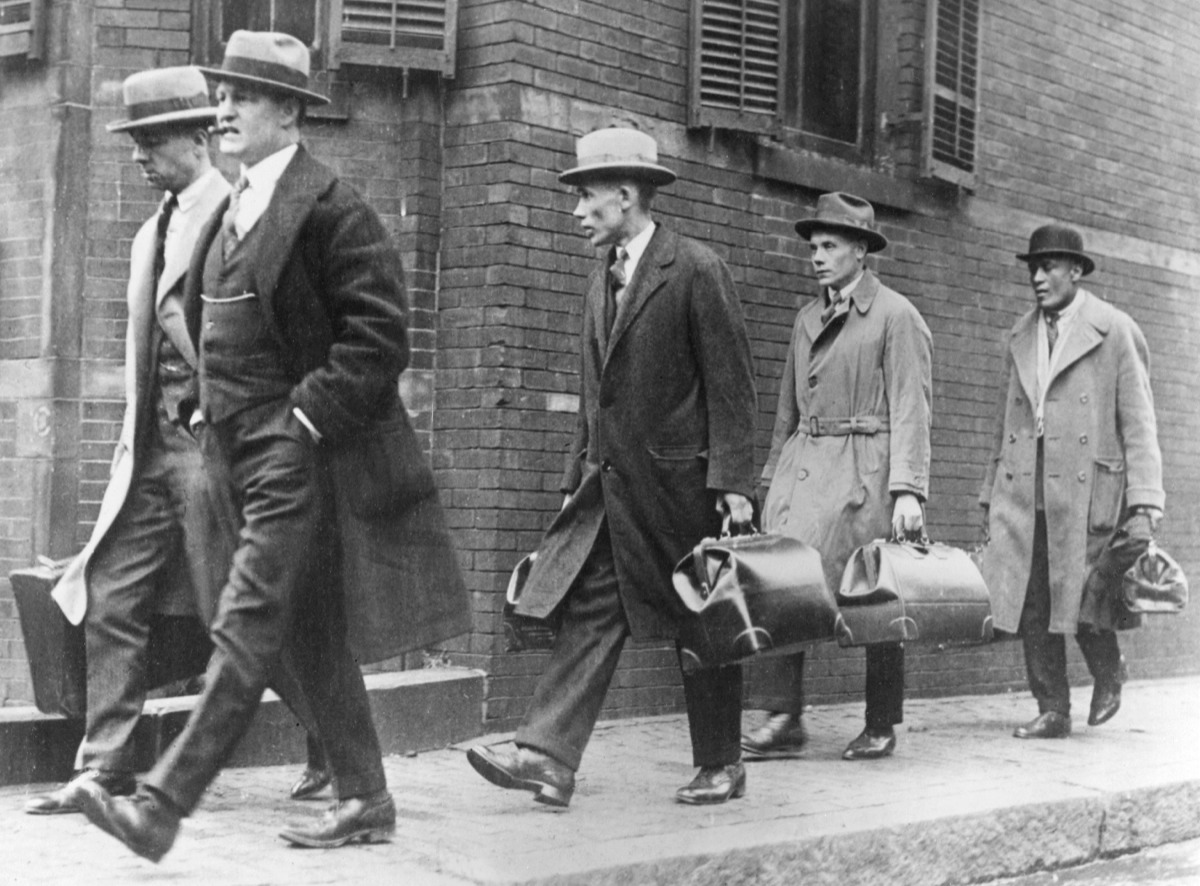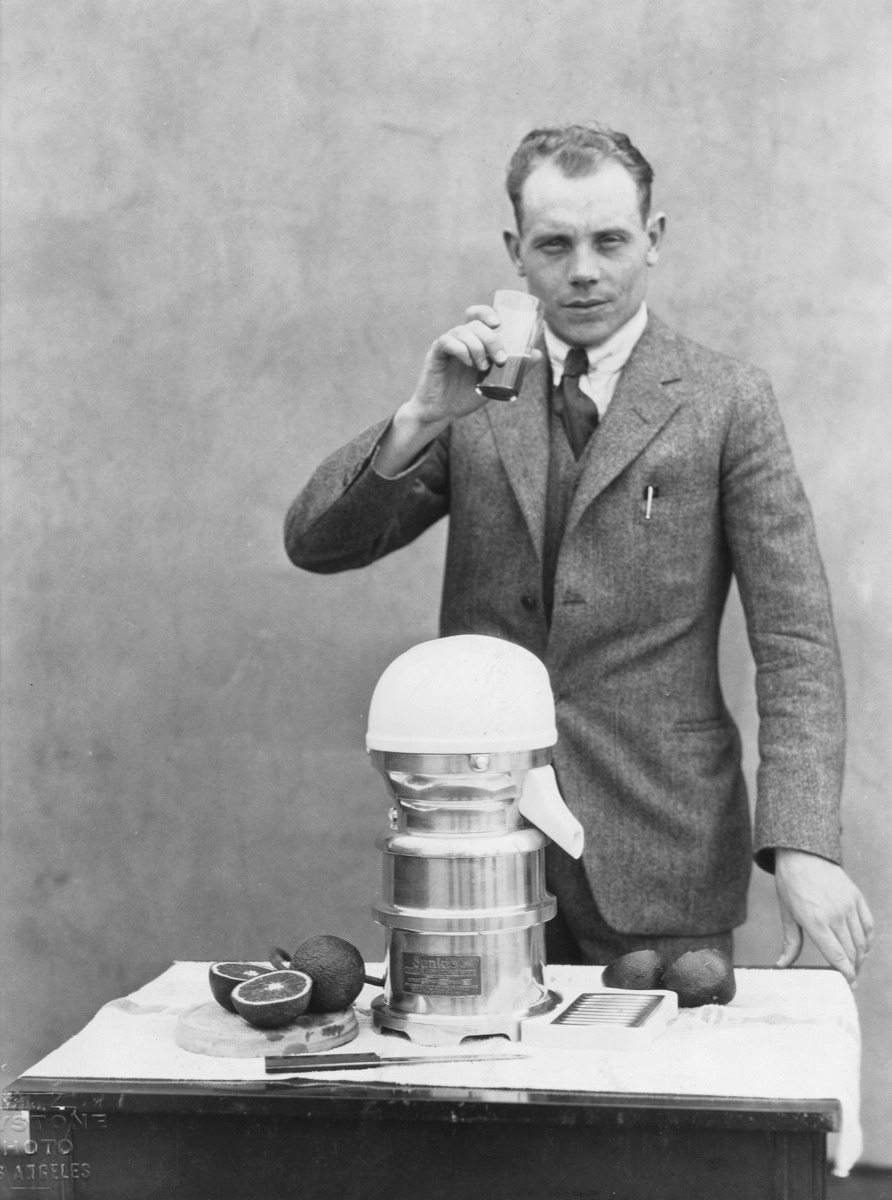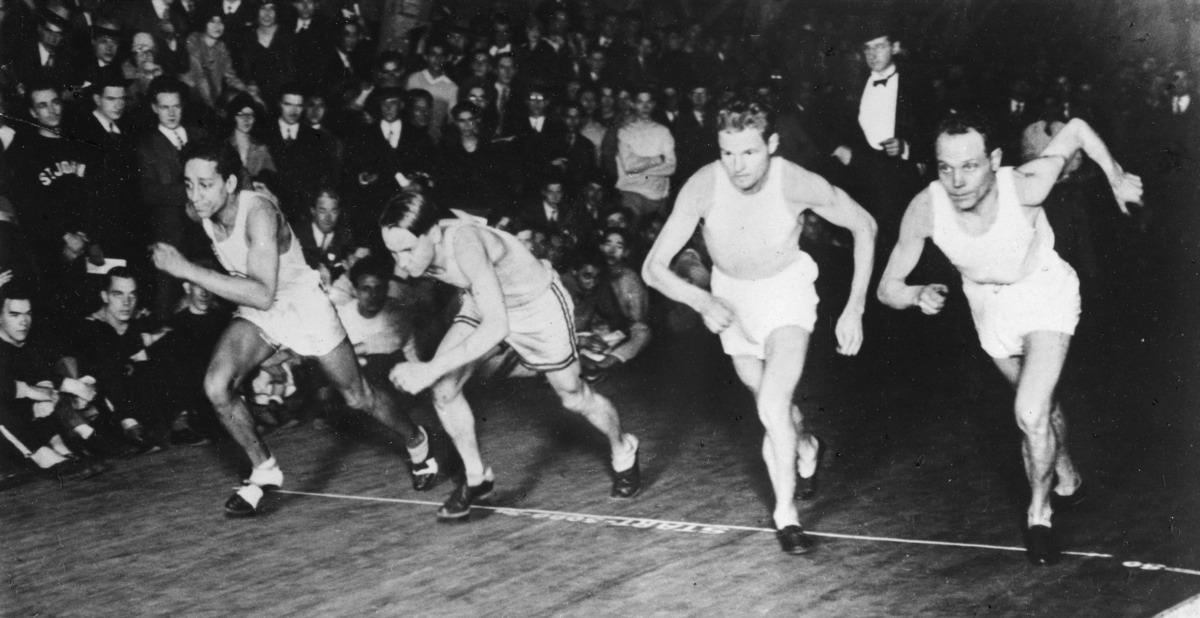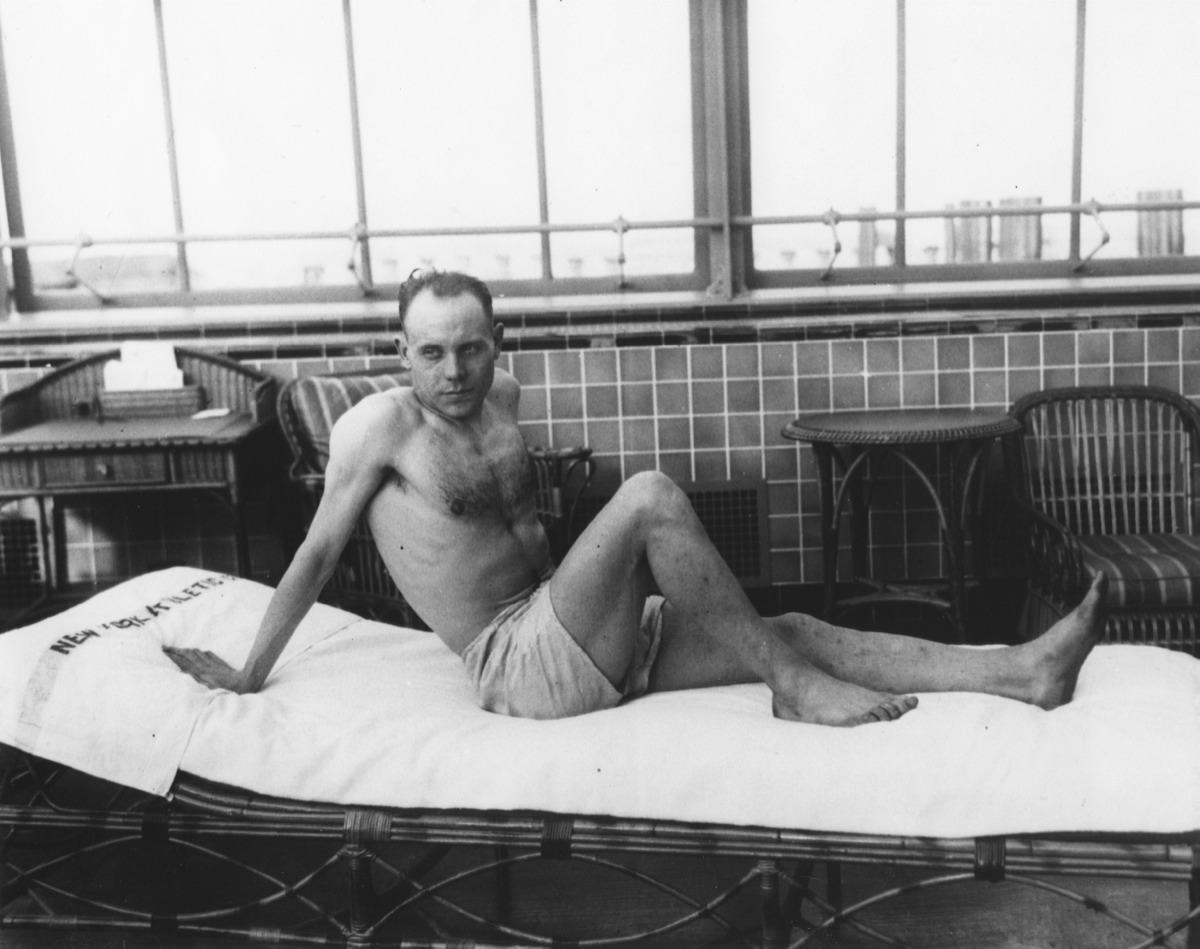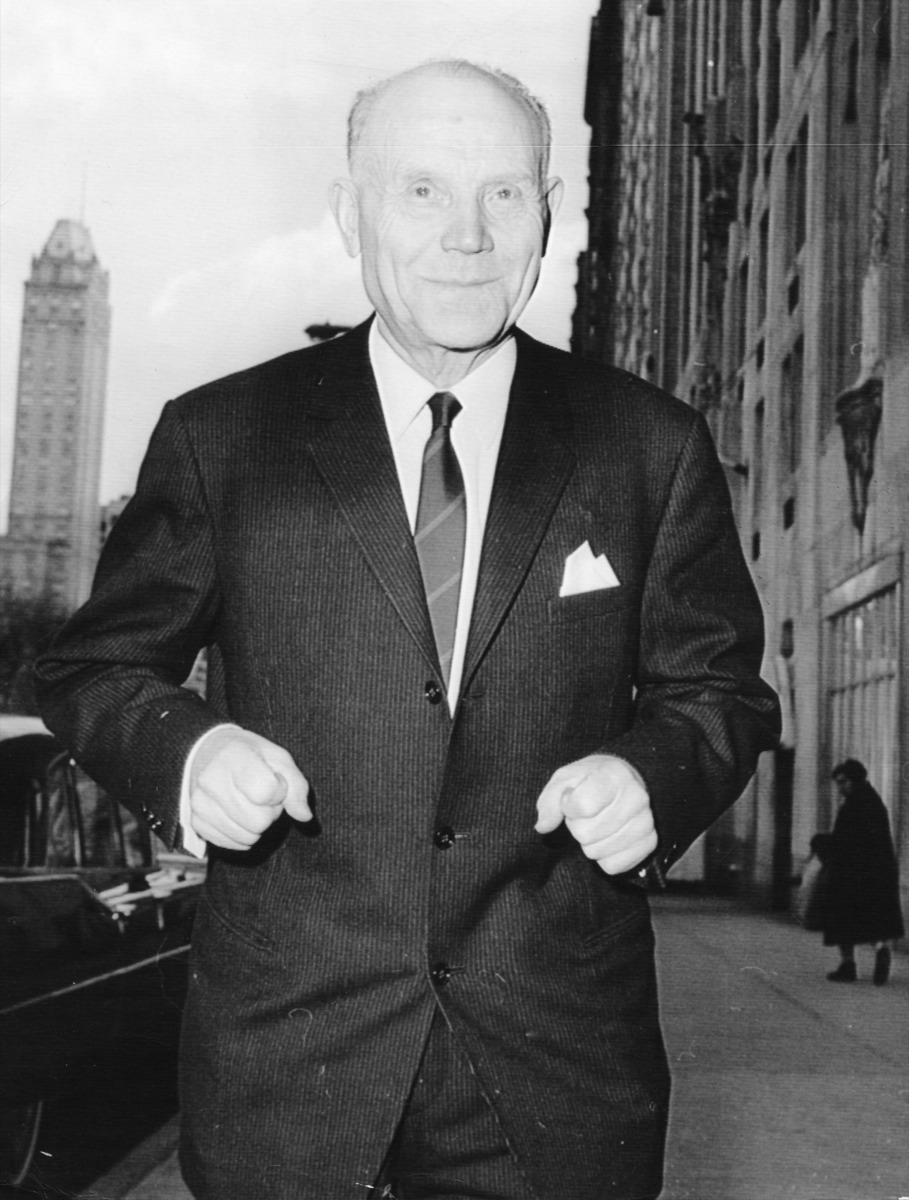THE AMERICAN TOUR OF 1925
As soon as Paavo Nurmi had established himself as the leading long-distance runner of the world, American athletics officials became anxious to have him run at the track circuits of the New World. They first approached Nurmi in November 1922, but their plans were postponed first by Nurmi’s studies at the Industrial School of Helsinki and later by his preparation for the Olympic Games in Paris in 1924. After his triumphs in Paris Nurmi’s market value only increased in the eyes of American track promoters. In November 1924 Nurmi finally embarked on the journey across the Atlantic, accompanied by his loyal masseur Eino Hakoniemi. Conditions aboard the s/s Celtic were not ideal for training. Nurmi later described his trip: “I trained every day on board. Or, actually, at night under poor electric lighting. At daytime I was too ashamed and in the morning hours I didn’t dare because the stewards were already up.” The Celtic arrived in New York on 10 December 1924. Hundreds of Finnish-Americans had flocked to the harbor to welcome their champion. There was an official reception at City Hall, and Mayor Hylan offered Nurmi the ceremonial key to the city.
IN SMOKE AND ROAR
Nurmi’s “trainer, coach and advisor” in America was Hugo Qvist, the chairman of the Finnish-American Athletic Club of New York. He lived at first at Qvist’s home in the Bronx but soon moved to a more secluded place to avoid journalists and eager fans. Nurmi started to train hard for the grueling circuit ahead. After a two-and-a-half-week spell of outdoor exercises he had one more week to get used to indoor tracks.
Madison Square Garden was sold out for Nurmi’s first race on 6 January 1925. The 160-yard track of the Garden was considered the fastest in America, as Nurmi would himself later concur. The air was thick with cigar smoke but Nurmi only found that invigorating. The promoters had devised a re-run of Nurmi’s famous exploit in Paris: Nurmi would run two races, one mile and 5000 metres, inside an hour. In the mile-race, the Americans Joie Ray and Lloyd Hahn seemed to pull to victory, but Nurmi catched both of them and crossed the finish line in new indoor world record time of 4:13.5. The start of the 5000 meters was somewhat delayed due to eager photographers. As in Paris, Nurmi now faced Ville Ritola. Running in his home town, Ritola kept early pace, but 200 meters to go Nurmi launched an irresistible sprint and clocked the time of 14:44.6 – another indoor world record!
COAST TO COAST, RACE TO RACE
Nurmi had not thought of spending the whole winter in America, but after his brilliant opening night invitations poured from every corner of the country. All in all, Nurmi was to run 55 races during his tour, and in between he gave numerous running exhibitions at schools, universities and military barracks. Traveling and PR commitments took greater toll of Nurmi than racing ever did. He traveled from coast to coast, from Boston to San Francisco, with a couple of trips to Canada in between. All in all, he covered 50,000 kilometres in four months, mostly by train or automobile. As indoor track meets mostly took place late at night and Nurmi’s race, always scheduled as the main event, usually started close to midnight, he could not go to sleep until the early hours. Considering the circumstances, Nurmi’s balance sheet was incredible: he won 51 of his 55 races (45 indoors, 10 outdoors), abandoned one race and lost only three (two of his defeats were in handicap races). He set 12 new indoor world records in regular distances and many more in rarer events. Nurmi suffered his only scratch-race defeat in his last race, an 880-yard sprint on 26 May in Yankee Stadium, New York to Alan Helffrich, the fastest half-miler of the hemisphere. Out of politeness, one newspaper article claimed.
WHY DID AMERICANS TAKE NOTE?
Why did Paavo Nurmi’s American tour gain so much publicity as it did? How did the “Phantom Finn”, quiet and reclusive, capture the imagination of the American public in the roaring twenties, in the era of charleston, jazz and speakeasies, if only for a short time? Nurmi himself did not seek any undue attention: during the whole tour, he did not give a single interview – he never did. Once at home, he was awarded high national honours by the President of Finland as a matter of course, but why did President Calvin Coolidge want to meet the Finnish runner?
From January to March 1925 the New York Times published over 70 articles on Nurmi’s tour, and smaller papers followed the lead. Media attention and Nurmi’s popularity fed each other: he made news as long as he sold news, and vice versa. Nurmi himself had a perceptive eye on America: “You can see a newspaper in everyone’s hands, but they read only sports pages and then toss the paper away.” In winter 1929 Nurmi made a second American tour. The publicity was there again, but this time his schedule was much more modest. Later in life, Paavo Nurmi visited the United States several times, always as a celebrated guest.


